ikfoundation.org
Promoting Natural & Cultural History
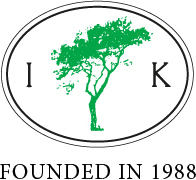




Home > Field Station | Naturae Observatio > Seasonal Build-up of the Bird Community
HOW TO CITE or MAKE CREDIT

SCIENTIFIC RESEARCH PROJECTS
| SEASONAL BUILD-UP OF THE BIRD COMMUNITY - A SOUND APPROACH

SEASONAL BUILD-UP OF THE BIRD COMMUNITY - A SOUND APPROACH
SWEDISH MUSEUM OF NATURAL HISTORY
SWEDISH MUSEUM OF NATURAL HISTORY
- PROJECT TITLE: SEASONAL BUILD-UP OF THE BIRD COMMUNITY - A SOUND APPROACH
- ESTIMATED START-UP TIME: Autumn 2018
- GEOGRAPHICAL RESEARCH / MONITORING AREA: Area A
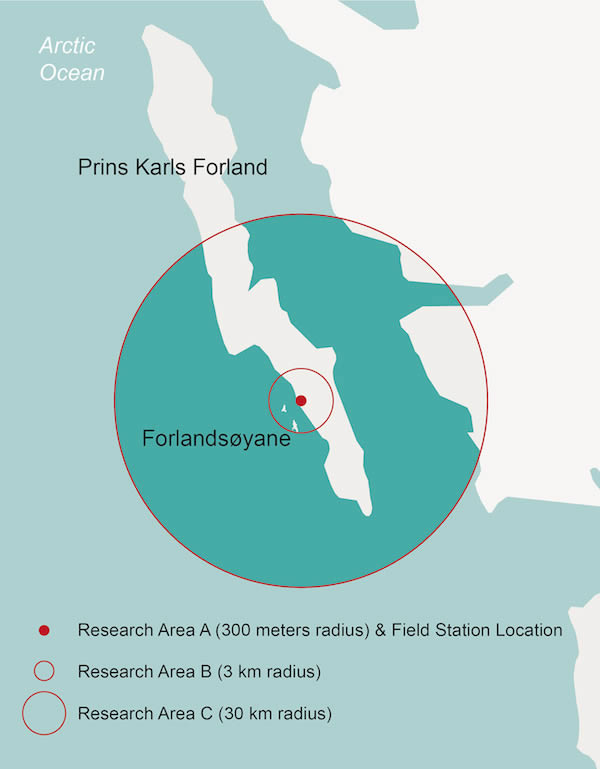
ABSTRACT
 The aim of this project is to record the seasonal build-up and activity patterns of the bird community on Prins Karls Forland. I will use an Automated Sound recorder to record arrival and departure times of the different bird species breeding in, or migrating through, the area and follow their activity patterns over the season. These data will be analysed together with the meteorological data captured by FIELD STATION | NATURAE OBSERVATIO.
The aim of this project is to record the seasonal build-up and activity patterns of the bird community on Prins Karls Forland. I will use an Automated Sound recorder to record arrival and departure times of the different bird species breeding in, or migrating through, the area and follow their activity patterns over the season. These data will be analysed together with the meteorological data captured by FIELD STATION | NATURAE OBSERVATIO.
INTRODUCTION
 Determining and measuring temporal and spatial changes in global biodiversity is one of the most fundamental aspects of conservation biology. A broad variety of methods for monitoring and assessing species diversity exist, including mist-netting and trapping, or various point and transect counts. However, although all of these methods are valuable and important, they also have some drawbacks. For instance, individual counts are not reproducible and are often subjective and highly dependent on the skill of the observer. Furthermore, in areas sensitive to disturbance none of these methods may be suitable as they require presence of a human observer, and for some of the methods, also direct interference with the animals. Therefore, as a complement to these traditional methods, automated sound recorders have been developed as an import new tool to monitor the presence of species in an area and to track changes in animal communities and biodiversity. These recorders collect large amounts of sound data, which then can be analysed in a standardised way and also be validated by independent researchers.
Determining and measuring temporal and spatial changes in global biodiversity is one of the most fundamental aspects of conservation biology. A broad variety of methods for monitoring and assessing species diversity exist, including mist-netting and trapping, or various point and transect counts. However, although all of these methods are valuable and important, they also have some drawbacks. For instance, individual counts are not reproducible and are often subjective and highly dependent on the skill of the observer. Furthermore, in areas sensitive to disturbance none of these methods may be suitable as they require presence of a human observer, and for some of the methods, also direct interference with the animals. Therefore, as a complement to these traditional methods, automated sound recorders have been developed as an import new tool to monitor the presence of species in an area and to track changes in animal communities and biodiversity. These recorders collect large amounts of sound data, which then can be analysed in a standardised way and also be validated by independent researchers.
AIM OF STUDY PROPOSED
 The aim of this study is to use an automated sound recorder to track the seasonal build-up of the bird community at southern Prins Karls Forland. By using a standardised approach various biological activities identifiable by sound (e.g. arrival times) for all species breeding or migrating in the vicinity of the FIELD STATION | NATURAE OBSERVATIO. As detailed meteorological data for this site will also be available, the biological information will be correlated with these data in order to better evaluate the changes in the biological activity.
The aim of this study is to use an automated sound recorder to track the seasonal build-up of the bird community at southern Prins Karls Forland. By using a standardised approach various biological activities identifiable by sound (e.g. arrival times) for all species breeding or migrating in the vicinity of the FIELD STATION | NATURAE OBSERVATIO. As detailed meteorological data for this site will also be available, the biological information will be correlated with these data in order to better evaluate the changes in the biological activity.A drawback of automated sound recorders, however, is that they only record sounding animals, such as singing or calling birds and only within the range limits of the microphone. Furthermore the quality of the recordings area affected by disturbances from the environment such as strong winds and rain. Therefore the additional data and live pictures captured by FIELD STATION | NATURAE OBSERVATIO, provide a unique opportunity to evaluate how well the detection of species/individuals by the sound recording approach correspond to what can actually be seen around the field station at that time. A second aim of this project is therefore to evaluate how the incorporation of visual and meteorological data can be used to improve the automatic surveillance of bird populations.
The data on the seasonal species build-up on Prins Karls Forland will also be used in an ongoing project on the seasonal variation in immune function in Svalbard ptarmigan (PIs: Andreas Nord and Arne Hegemann). The immune system protects the body against harmful pathogens and thereby promotes survival. However, a proper developed and maintained immune system requires resources, e.g. energy and nutrients. Animals in the high Arctic that require much resources for thermoregulation might face a trade-off between investment into an optimal functioning immune system and producing heat to survive the cold conditions. Studies on captive Svalbard ptarmigan indicate that this bird species has a poorly developed immune system, which is even further suppressed in winter. Information about seasonal variations in the risk of catching disease is currently lacking and therefore data on seasonal migration patterns of other bird species is necessary to determine potential links between seasonal variations in immunity and migration patterns of Svalbard birds.
APPROACH OF STUDY
 An automated sound recorder (Song Meter SM4) supplemented with external microphones and an external battery supply will be integrated with FIELD STATION |NATURAE OBSERVATIO in order to record the bird activity around the field station over the season. The recorder will be set to automatically record sounds for 10 minutes every hour, 24 hours a day. The collected sound data will be analysed using the software, Kaleidoscope (www.wildelifeacoustics.com), which uses a clustering algorithm to automatically group similar songs and calls. Using this approach first appearance and last appearance as well as daily activity patterns will be recorded. In addition, beg calls from chicks will be identified in order to estimate breeding success. The automated sound recorder may also record stress calls, which may give an indication of the degree of disturbances in the area (natural or caused by man).
An automated sound recorder (Song Meter SM4) supplemented with external microphones and an external battery supply will be integrated with FIELD STATION |NATURAE OBSERVATIO in order to record the bird activity around the field station over the season. The recorder will be set to automatically record sounds for 10 minutes every hour, 24 hours a day. The collected sound data will be analysed using the software, Kaleidoscope (www.wildelifeacoustics.com), which uses a clustering algorithm to automatically group similar songs and calls. Using this approach first appearance and last appearance as well as daily activity patterns will be recorded. In addition, beg calls from chicks will be identified in order to estimate breeding success. The automated sound recorder may also record stress calls, which may give an indication of the degree of disturbances in the area (natural or caused by man). The use of audial recordings provides a standardised measure of bird activity that can be used to compare activity at other stations in other areas or record changes over time. However, as the automated sound recorders records only singing or calling birds, the visuals provided by the FIELD STAION | NATURAE OBSERVATIO gives the opportunity to make better estimates of the actual abundance of bird species within the study plot. Furthermore, in a broader perspective, it gives an opportunity to evaluate how well the audial recordings actually capture the situation around the sound recorder. Therefore an important aspect of the program is to compare the visual information with the audial recordings to get an estimate of the amount of erroneous identifications and how well the sound recordings can be used to predict abundance etc.
SUMMARY
 Automated sound recorders are an important complement to traditional methods for monitoring fluctuations and trends in bird populations. As the FIELD STATION | NATURAE OBSERVATIO provides information that rarely are available during automatic sound recordings, for instance visual and meteorological data, a unique opportunity is given to evaluate how well the estimates based on the audial recordings are able to capture the real situation. This data can be used to develop better and more realistic automatic species surveillance programs.
Automated sound recorders are an important complement to traditional methods for monitoring fluctuations and trends in bird populations. As the FIELD STATION | NATURAE OBSERVATIO provides information that rarely are available during automatic sound recordings, for instance visual and meteorological data, a unique opportunity is given to evaluate how well the estimates based on the audial recordings are able to capture the real situation. This data can be used to develop better and more realistic automatic species surveillance programs.
REFERENCES
- Brandes, T.S. 2008. Automated sound recording and analysis techniques for bird surveys and conservation. Bird Conservation International: 18: S163-S173.
- Buxton, R.T. and Jones, I. L. 2012 Measuring nocturnal seabird activity and status using acoustic recording devices: application for island restoration. Journal of Field Ornithology 83: 47-60.
- Depraeter, M. Pavoine, S., Jiguet, F., Gasc, A., Duvail, S. and Sueur, J. 2012 Monitoring animal diversity using acoustic indices: Implementation in a temperate woodland. Ecological Indicators 13: 46-54.
SPECIFICATION OF TECHNICAL EQUIPMENT REQUIRED
- Wilde Life Acoustics Song Meter SM4 automated sound recorder
- Wilde Life Acoustics Song Two external SMM-A2 microphones
- Wilde Life Acoustics Song Kaleidoscope Analysis software
- External battery supply
- In addition, visuals and meteorological data captured by the FIELD STATION | NATURAE OBSERVATIO
PARTICIPATING ORGANISATIONS
- Swedish Museum of Natural History
- The IK Foundation
- GBIF Norway—The Global Biodiversity Information Facility
WEBSITE
 www.nrm.se
www.nrm.se
PROJECT MANAGER
 Ulf Johansson, Swedish Museum of Natural History, Department of Zoology, Box 50007, SE-104 05 Stockholm, Sweden
Ulf Johansson, Swedish Museum of Natural History, Department of Zoology, Box 50007, SE-104 05 Stockholm, Sweden
FIELD
STATION
NATURAE OBSERVATIO
The IK Foundation has taken the initiative to develop the next generation of scientific Field Stations. The work with FIELD STATION | NATURAE OBSERVATIO is a long-term project, a practical and theoretical enterprise - and part of the BRIDGE BUILDER EXPEDITIONS - aiming to establish eco-designed autonomous Field Stations, which unattended during night and day, all year-round will observe a selected landscape and its life.
The observations - as well as the designs and structures of stations vary – but is always an interdisciplinary resource to document nature and the environment during a predetermined period of time between one to three years.
For regular updates, we recommend fellowship by subscribing to our monthly newsletter iMESSENGER.
The observations - as well as the designs and structures of stations vary – but is always an interdisciplinary resource to document nature and the environment during a predetermined period of time between one to three years.
For regular updates, we recommend fellowship by subscribing to our monthly newsletter iMESSENGER.
PATRONAGE
This site/project
has been made globally available in collaboration with:
 Feel welcome to read more about how to take part...
Feel welcome to read more about how to take part...
 Feel welcome to read more about how to take part...
Feel welcome to read more about how to take part...
LINKS | FURTHER READING

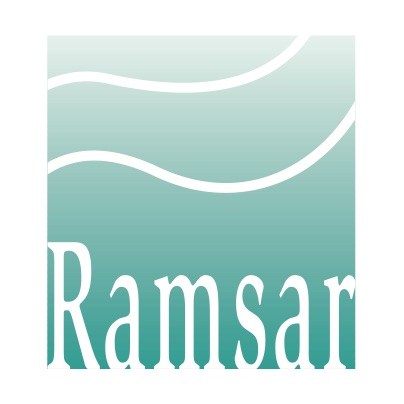
- BRIDGE BUILDER EXPEDITIONS SPITSBERGEN
- Research in Svalbard (RIS)
- RIS-ID 10275 (Bridge Builder Expeditions Spitsbergen)
- RIS-ID 11055 (Field Station Research Projects)
- The Norwegian Polar Institute's topographical Svalbard map portal
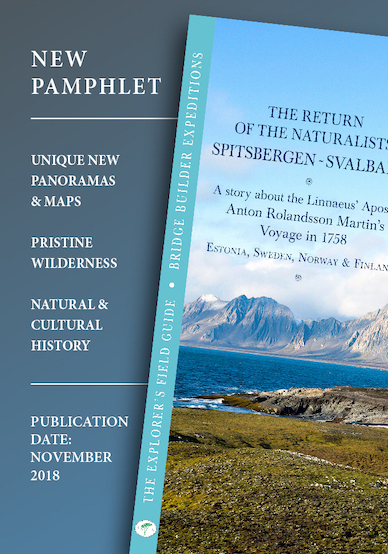


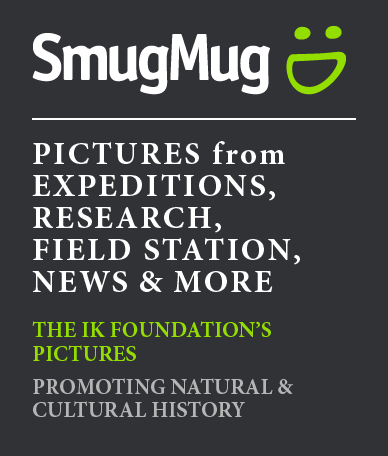
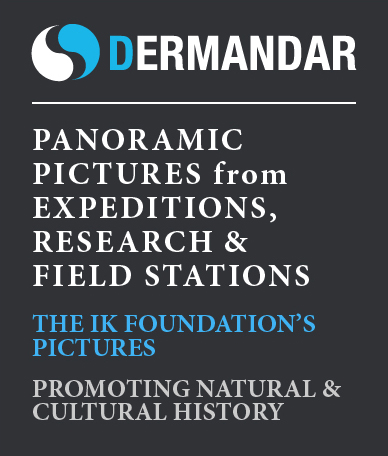

PROJECT GOVERNING
Lars Hansen | The IK FoundationArne Ardeberg | The IK Foundation
PRINCIPAL REFERENCES & RESOURCES
• The IK Foundation Mission Control Centre | Lars Hansen, Jeff Snoxell, Graham Scott • The Governor of Svalbard | Paul Lutnæs, Morten Wedege • LMK-stiftelsen | Foundation for Interdisciplinary Scientific Research | Malin Ferhm • Research & Reception Desk Office at The IK Foundation | Arne Ardeberg, Jennie Asher, Viveka Hansen, Leo RyderSee also LIST OF PARTICIPATORS
Updated/Checked 09/02/2023
THE IK FOUNDATION & COMPANY PROMOTING NATURAL & CULTURAL HISTORY
SUBSCRIBE TO OUR NEWSLETTER
TRANSLATE PAGE
A link to this page has
been copied to your clipboard
SHARE @been copied to your clipboard




© The IK Foundation & Company 2025
– a truly European organisation since 1988
– a truly European organisation since 1988
Legal issues | Forget me | and much more...
Home > Field Station | Naturae Observatio > Seasonal Build-up of the Bird Community


 FIELD STATION OVERVIEW
FIELD STATION OVERVIEW




